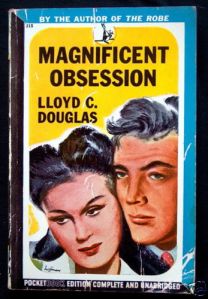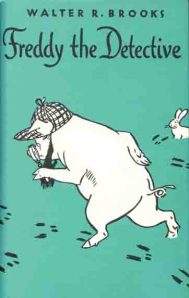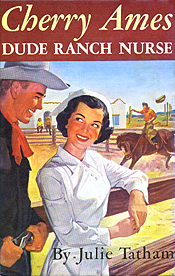 A few weeks ago, I contributed guest column to Suzanne Beecher’s Dear Reader, the expansive online book club. Writing it, I ended up on a flight of nostalgia, recalling the library branch that meant the most to me when I was young, and a string of early reading memories. The day the column went out to Suzanne’s readers, my inbox filled all day, and the days following, with messages from hundreds of readers who shared reading memories far richer than my own.
A few weeks ago, I contributed guest column to Suzanne Beecher’s Dear Reader, the expansive online book club. Writing it, I ended up on a flight of nostalgia, recalling the library branch that meant the most to me when I was young, and a string of early reading memories. The day the column went out to Suzanne’s readers, my inbox filled all day, and the days following, with messages from hundreds of readers who shared reading memories far richer than my own.
In this era of “the book is dead” (isn’t that every era, since books began?) and at a time when I sometimes feel I’m too much in the “business of books” to enjoy them the same way ever again, I felt sharply humbled by the extent of book-love, library-love, reading-love that came through every email. And the extent to which everyone wanted to share that love: Ninety-year-old readers with Nooks in hand, young mothers trotting their children to the local library, one woman savoring her adolescent daughter’s love of classics like The Black Tulip and The Hunchback of Notre Dame.
Those who said they came to love reading out of loneliness, those who said they came to read as an escape from the noise of their crowed homes.

Others who recalled “illicit” reads, such as Max Ehrlich’s The Reincarnation of Peter Proud, Judy Blume’s Wifey, V.C. Andrews (of course), Lloyd Douglas’s Magnificent Obsession, Taylor Caldwell’s Captains and the Kings and quite a bit of Jacqueline Susann.
And so many tales of local libraries as second homes, and of, as one reader put it, struggling to steer her bike home because she had stacked so many books into the bag hanging from her handlebars.
Reading all of these emails stirred even more of my own early reading memories, and made me value doubly the encouragement and exuberance of my parents, many of my teachers and the folks at the Grosse Public Library-Woods Branch. But these emails also reminded me of the many ways readers find book love—through a friend, a grandfather with a home library, through movies or comics or those who grow up in non-reading households that find books utterly on their own.
Here’s a few letters from these readers (reprinted with their permission):
As a child in a Chicago grade school, one of favorite times was our school library. The librarian put aside the newest Sue Barton book so I would be the first to read it. She also chose me along with two other girls to attend the 80th birthday celebration for Laura Ingalls Wilder. This was in connection with the radio program “Hobby Horse Presents” hosted by Hugh Downs, sponsored by Carson Pirie Scott store. We were in attendance for the radio program which featured actors portraying Laura and Pa as he was taking her to her first teaching assignment. After the radio show, we were in a large room for breakfast (orange juice and sweet rolls), and sang “Happy Birthday to Laura,” who had sent a taped message to us.
Years later, much later in fact, I found out that the birthday card which we signed that day was hanging in the Laura Ingalls Wilder house in Mansfield, Missouri. In our moving travels from Chicago to Texas, we stopped there. I can tell you—this brought tears to my eyes when I saw the framed card hanging in her home!
— Janet Fricke, Ovalo, TX

My parents were readers and I was an only child. My father was in the Army until shortly before my tenth birthday in a time when television selections were limited. We resided for two years in Marquette, Michigan with the truly great Peter White Library; echoes of the high ceilings, ornate building and wood softened by decades of elbows resting on the rectangular tables.
No children were allowed unaccompanied into the Adult section but the Children’s Library was a haven with the complete Laura Ingalls Wilder, Frances Hodgson Burnett, the more obscure regional favorite DandelionCottage, the Bobbsey Twins, Cherry Ames, Betsy, Tacy and Tibb series, ah the joy of discovery of Nancy Drew and my childhood favorite, Walter Brooks’ Freddie the Pig series.
I won a blue ribbon in 4th grade for writing the most book reports during the school year…. (I, too, read somewhat age inappropriately—TheFountainhead at 13 is one glaring example.)
—Linda Hitchcock, Glasgow, KY

When I was about 10 or so, my dad worked swing shift a great deal. My mom’s friend Alda Mae lived between our house & the Safeway store, so we would often stop by there on the way to the store. Some nights we never did quite make it there, other than Cathy (Alda Mae’s daughter who was my age & a good friend) & I being sent to pick up a couple of boxes of Chef Boyardee Spaghetti & some french bread for us all to share. I was quite envious because Cathy had all the Nancy Drew books & her older brother Walt had all the Hardy Boys. Sometimes when we would stop by, Cathy would not be home & I would settle in her room & read Nancy Drew. But even better, sometimes Cathy & Walt were both gone & I would slip down to Walt’s basement room where no one would bother me to curl up & read his Hardy Boys.
I have so many fond memories of those evening at the Robbins’ home. Some times, Alda Mae played the piano & we would gather around & sing.
—Liz Stamp
I grew up in Northeastern Pennsylvaniaand our library was in a community center. I remember being the top reader every year in the summer reading program. My favorite place to read was behind a tombstone in the cemetery behind our house. So peaceful and quiet. You could really get lost in your book there.
[Today] I work at a library and whenever we have route-ins to do; opening those gray plastic tubs they come in is like opening a treasure chest to me. You never know what you will find.
—Patricia Corcoran
 Sunday’s New York Times ran an interesting piece that speculated about why Hollywood seems to have so few (and even fewer successful) movies with preadolescent girls (roughly ages nine to 14) at the center. While the book market for this age group is booming, the carryover to film has been far less reliable. While movies like 13 certainly depict the perils (in a way that reminded me mostly of the best art-directed after-school special ever) of the age, this article focuses instead on movies targeting preadolescent girl viewers.
Sunday’s New York Times ran an interesting piece that speculated about why Hollywood seems to have so few (and even fewer successful) movies with preadolescent girls (roughly ages nine to 14) at the center. While the book market for this age group is booming, the carryover to film has been far less reliable. While movies like 13 certainly depict the perils (in a way that reminded me mostly of the best art-directed after-school special ever) of the age, this article focuses instead on movies targeting preadolescent girl viewers. One of the films mentioned in the piece as a rare positive example is
One of the films mentioned in the piece as a rare positive example is  When I was nine the “teen sex comedy”
When I was nine the “teen sex comedy” 



 Eventually I abandoned Frank and Joe for more sophisticated pre-teen crimefighters.
Eventually I abandoned Frank and Joe for more sophisticated pre-teen crimefighters. 
 [Editor’s note: Today we are supremely lucky to have a special post from the multi-award-winning writer and cartoonist,
[Editor’s note: Today we are supremely lucky to have a special post from the multi-award-winning writer and cartoonist, 
 I can’t think of a kid I’d rather have been friends with than the Great Brain. But I wanted to be
I can’t think of a kid I’d rather have been friends with than the Great Brain. But I wanted to be 

 I was so enamored with the heroine Cathy that I used to sneak into my sister’s room and stare at her for hours. I wanted to be her, with her hair parted down the middle and perfect nose. I didn’t even want to open the book and read. The cover was enough.
I was so enamored with the heroine Cathy that I used to sneak into my sister’s room and stare at her for hours. I wanted to be her, with her hair parted down the middle and perfect nose. I didn’t even want to open the book and read. The cover was enough. When Petals on the Wind arrived in my sister’s drawer a few weeks later I couldn’t take my eyes off it. This cover was even more sinister! A foreboding flower with crimson petals, three suspended in falling! What could it mean? And what of the two faces in the center of the petals, where the stigma and other reproductive organs of the flower should have been?
When Petals on the Wind arrived in my sister’s drawer a few weeks later I couldn’t take my eyes off it. This cover was even more sinister! A foreboding flower with crimson petals, three suspended in falling! What could it mean? And what of the two faces in the center of the petals, where the stigma and other reproductive organs of the flower should have been?


 From fourth through seventh grade, I must have read every Judy Blume book—and the strange thing is, I believe I loved them for similar reasons as Bugliosi and Poe. I never was a fan of romance or fantasy. Xaviera aside, the fictional escapes I craved were the ones that made my own life seem better, or at least, more understandable… and that’s where Judy Blume came in.
From fourth through seventh grade, I must have read every Judy Blume book—and the strange thing is, I believe I loved them for similar reasons as Bugliosi and Poe. I never was a fan of romance or fantasy. Xaviera aside, the fictional escapes I craved were the ones that made my own life seem better, or at least, more understandable… and that’s where Judy Blume came in. In short, Blume, too, was a type of dark escape. While she didn’t write about murderous cults or hidden dead bodies, she tackled the horrors of adolescence—the awkwardness, the ugliness, the cruelty and the shame—in a way that made you physically cringe while turning the pages. (While reading Deenie, I swear I could feel that scoliosis cast, digging into my sides…) But she did it with a remarkable sense of humor and a voice that was all too human.
In short, Blume, too, was a type of dark escape. While she didn’t write about murderous cults or hidden dead bodies, she tackled the horrors of adolescence—the awkwardness, the ugliness, the cruelty and the shame—in a way that made you physically cringe while turning the pages. (While reading Deenie, I swear I could feel that scoliosis cast, digging into my sides…) But she did it with a remarkable sense of humor and a voice that was all too human.




